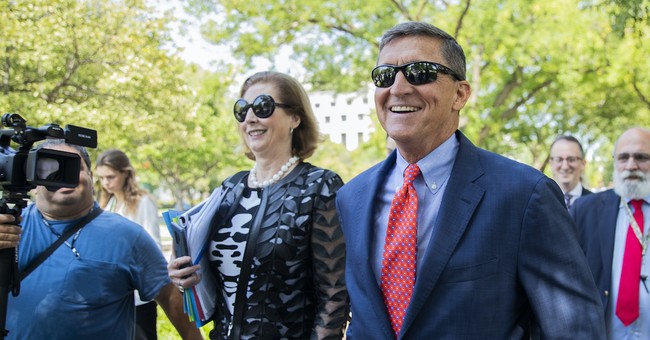
There has been some critical comments around the internet about the majority opinion by Judge Rao, in which it is said that she stopped Judge Sullivan from having a hearing on the DOJ motion to dismiss the case against General Flynn, and then asserted a lack of evidence of wrongdoing as a basis to direct Judge Sullivan to to dismiss the case — when the hearing she won’t allow is the vehicle for developing the very evidence she says he needs.
Understanding — maybe or maybe not — that such an argument skips right over the reasoning why a hearing is not allowed, while only lamenting about that fact that a hearing is not being allowed, some who are advancing this line of “thinking” are posing hypotheticals about how far advocates of a broad “separation of powers” argument would be willing to go to use it as a “shield” to insulate Executive Branch — cough “Bill Barr” cough — decisions from judicial scrutiny.
How about this answer — as far as the Supreme Court has held that we must go in order to preserve the constitutional framework that rests on the principle of mutual respect and comity co-equal branches of government must afford each other with regard to decision-making which the framework places within the authority of one branch, and sheltering that decision-making from examination or second-guessing by another branch of government that might seek to impose its own views.
“In our system, so long as the prosecutor has probable cause to believe that the accused committed an offense defined by statute, the decision whether or not to prosecute, and what charge to file or bring before a grand jury, generally rests entirely in his discretion.” Bordenkircher v. Hayes, 434 U.S. 357, 364 (1978)
This broad discretion rests largely on the recognition that the decision to prosecute is particularly ill-suited to judicial review. Such factors as the strength of the case, the prosecution’s general deterrence value, the Government’s enforcement priorities, and the case’s relationship to the Government’s overall enforcement plan are not readily susceptible to the kind of analysis the courts are competent to undertake. Judicial supervision in this area, moreover, entails systemic costs of particular concern. Examining the basis of a prosecution delays the criminal proceeding, threatens to chill law enforcement by subjecting the prosecutor’s motives and decisionmaking to outside inquiry, and may undermine prosecutorial effectiveness by revealing the Government’s enforcement policy. All these are substantial concerns that make the courts properly hesitant to examine the decision whether to prosecute. Wayte v. United States, 470 U.S. 598, 607-8 (1985)
[A] common reason for failure to prosecute an alleged criminal violation is the prosecutor’s belief (sometimes publicly stated) that the law will not sustain a conviction. That is surely an eminently “reviewable” proposition, in the sense that courts are well qualified to consider the point; yet it is entirely clear that the refusal to prosecute cannot be the subject of judicial review. Interstate Commerce Commission v. Brotherhood of Locomotive Engineers, 482 U.S. 270, 283 (1987)
But, for sake of argument, let us simply abandon the principle of “separation of powers” altogether because it sometimes can lead to results — such as in the Flynn case — which greatly disappointments those rooting-on the “Javert-like” quest to hang “Russian Agent” around the neck of some confederate of Donald Trump — any confederate of Donald Trump — while singing the in the chorus the lyrics of “Orange Man Bad.”
Consider a couple hypotheticals about where the abandonment of separation of powers might lead us as a basis for illustrating the value in preserving the principle regardless of the outcome it might produce in any particular case:
- A district judge is wrestling with the meaning of a particular statutory provision which is susceptible to two equally compelling interpretations, with one interpretation favoring one party in the case before the court, and the other interpretation favoring the opposing party in the case before the court. To resolve the conflict, where the written legislative history is not conclusive, the judge issues a material witness warrant for the Chairman of the Congressional committee which drafted the legislation. Can an Article III judge, using his subpoena power under threat of contempt, command the presence and examination under oath of a member of Congress about the internal deliberations of the Committee on the meaning of the statute?
- In a bitterly fought matter of litigation pitting the House of Representatives against the Executive, an Art. III Judge issues a one line decision, without explanation, ruling in favor of the House. Suspicious by the absence of any reasoning for the decision, the Executive believes the Art. III Judge may have been promised large increases in Judicial salaries for the next fiscal year, with Congressional support promised at levels that amount to veto-proof majorities, in exchange for the favorable ruling Based on that suspicion, the Executive serves a “forthwith” grand jury subpoena on the Art. III Judge who issued the ruling and escorts him to a sitting federal grand jury to answer questions of prosecutors working for the Executive concerning the basis for his decision, and inquiring about pay increases promised for the following year as disclosed by a “whistleblower”.
Are there any concerns about whether the actions of the either the Judiciary in hypothetical (1) or the Executive in hypothetical (2) intrude upon the functions of a co-equal branch of government by demanding answers under oath for decisions by Congress in (1) and the Judiciary in (2) on matters that are committed to each of those branches by the constitutional framework?
“Separation of Powers” means there are nearly insurmountable barriers to inquiry by all three branches into certain affairs of the other branches. If the barriers are abandoned in individual cases because the produced unwelcome results, then there are no barriers at all. Every case becomes an ad hoc search for a justification to inquire if such inquiries are available when a cleverly crafted predicate for doing so can be ginned up.
This is where the value of the doctrine known as “presumption of regularity” becomes valuable. As the Supreme Court explained in US v. Chemical Foundation in 1926 — long before Donald Trump and Bill Barr benefited from application of the doctrine:
The presumption of regularity supports the official acts of public officers and, in the absence of clear evidence to the contrary, courts presume that they have properly discharged their official duties…. Under that presumption, it will be taken that Mr. Polk acted upon knowledge of the material facts. The validity of the reasons stated in the orders, or the basis of fact on which they rest, will not be reviewed by the courts.
Judge Rao prevented Judge Sullivan from conducting a hearing because the subject of the intended hearing — based on the orders entered by Judge Sullivan, and the briefing presented to the Circuit Court — was to be a “journey” beyond the boundaries allowed by separation of power concerns with regard to the topic under review. The Government’s reply brief filed with the Circuit Court presented the problem in starkest terms by juxtaposing what Judge Sullivan proposed to do against what Fokker Services said Judge Sullivan could not do:
[In Fokker Services] [t]his Court explained that “[t]he Executive’s charging authority embraces decisions about … whether to dismiss charges once brought”; that courts may not “second-guess the Executive’s exercise of discretion over the … dismissal of criminal charges”; that “[d]ecisions … to dismiss charges once brought[] ‘lie at the core of the Executive’s duty’”; that “‘few subjects are less adapted to judicial review than … [the decision] whether to dismiss a proceeding once brought’”; that “decisions to dismiss pending criminal charges … lie squarely within the ken of prosecutorial discretion”; that Federal Rule of Criminal Procedure 48(a) “concerns the prosecution’s core prerogative to dismiss criminal charges”; and that the Judiciary “lack[s] … competence to review the prosecution’s … dismissal of charges.”
Judge Sullivan’s Orders and his briefing before the Circuit Court baldly laid out that he intended to do these things that Fokker Services says a court cannot do pursuant to the “leave of court” language inserted into Rule 48(a).
Whatever that language might have meant at the time it was inserted into the Rule by the Supreme Court in 1942, that meaning in 1942 must bend to conform to the limits placed on such inquiries by Supreme Court decisions based on separation of powers concers in the nearly 80 years since the language was adopted.
Let me digress a couple final thoughts.
Was the issuance of the writ of mandamus improper based on the fact that the irreparable harm which Judge Rao identified was the harm suffered by DOJ, but it was Gen. Flynn who had sought mandamus based on irreparable harm to him if Judge Sullivan was not directed to dismiss the case. Some suggest that Dep. Solicitor General Jeffrey Wall who argued the matter on behalf of DOJ flinched when he was asked to address that point, and also pointing out that technical matter alone should have justified denying the petition and allowing the hearing to proceed. So, is that correct??
As Judge Rao pointed out, the Court invited the Government to file a brief on the merits of the Petition, and it is the government’s motion that is pending before Judge Sullivan. In that brief the government raised not only the injury to Gen. Flynn but also the injury to the Government that would flow from the hearing process Judge Sullivan’s orders had set in motion. During the oral argument, Judge Wilkins asked why the Government had not sought mandamus relief if the threatened harm was so great. Dep. SG Wall observed it was still possible that the Government might file a petition — and in making that comment he was correct. But he also noted that when Courts seek the Government’s input in this kind of circumstance, Courts accept the Government’s arguments as if it was seeking relief itself. That’s not “stammering” — its pointing out to the questioner that the premise of the question — i.e., that the Government must seek mandamus for its injury to be recognized — is specious and contrary to the practice.
Judge Rao in her opinion cited to a decision of the DC Circuit in 2003, Corbell v. Norton, where the government had filed an interlocutory (while the case is pending) appeal on three decisions by the trial court judge, but had not filed a petition for writ of mandamus. The Circuit Court found that one of the issues being appealed was not within the Court’s appellate jurisdiction, so it could not consider the issue as part if the appeal. But it chose to treat the improperly filed appeal as a petition for writ of mandamus since the Government’s right to relief on the issue was clear. In that case the Court wrote:
We also find it appropriate to issue the writ in order to clarify that the district court exceeded its authority…. As we discuss below, the Department’s right to relief is clear, and the injury it alleges — interference with the internal deliberations of a Department of the Government of the United States — cannot be remedied by an appeal from the final judgment.
In a footnote, the Court addressed the fact that no petition for writ of mandamus was sought:
The plaintiffs contend we should not issue the writ because the Department did not file a separate petition for mandamus, which they claim is required by Federal Rule of Appellate Procedure 21 and Circuit Rule 21. For its part, the Government points to our prior decision treating an improper interlocutory appeal as a petition for mandamus, Ukiah Adventist Hosp. v. FTC, 981 F.2d 543, 548 n. 6 (1992), in the light of which we deem the Government’s omission excusable.
As Dep. SG Wall told Judge Wilkins, nothing prevented the Government from taking its Brief in support of Gen. Flynn’s petition, making a few modifications, and filing it the next day as a Petition for Writ of Mandamus. All the same issues would be before the Court, the only difference being the waste of time and resources of the parties, the District Court Judge, and the Circuit Court in having another round of briefing only to wind up right back in the same spot.
So, when the uninformed tell you that the “technical” failure by DOJ to seek its own writ of mandamus should have been fatal to the Flynn effort to seek relief, understand that such a view only reflects their ignorance of the process.
One final issue recently caught my attention — the continued vitality and meaning of the decision in U.S. v. Cowan, a Fifth Circuit decision related to the Rule 48(a) question. Cowan is considered by some to be important because the Supreme Court mentioned it in a footnote in its Rinaldi decision with respect to the meaning of “leave of court” as set forth in Rule 48(a).
Cowan is a 1975 decision holding that a district court judge can conduct an inquiry on a Rule 48(a) motion to determine whether granting the motion is “clearly contrary to manifest public interest.” But in 1981, the same Fifth Circuit Court of Appeals, this time sitting en banc — meaning all judges of the Court participated in the case — decided United States v. Hamm. In Hamm, the en banc Court held:
The district court appears to have placed the burden on the prosecutor to show that dismissal itself would be in the public interest. The language of this court in Cowan and the Supreme Court in Rinaldi makes it clear that the motion should be granted unless the trial court has an affirmative reason to believe that the dismissal motion was motivated by considerations contrary to the public interest. As the district judge acknowledged, the prosecutor is the first and presumptively the best judge of where the public interest lies. The trial judge cannot merely substitute his judgment for that of the prosecutor.
Under Hamm — which is a Fifth Circuit case, not a DC Circuit case, so it is not controlling — Judge Sullivan cannot put the government’s expressed motives on trial in a hearing seeking to probe the decision-making process. He must accept the motives as stated, and then make a judgement as to whether those stated motives are “clearly contrary to the manifest public interest.” He cannot make an independent judgement for himself as to what is or is not in the “manifest public interest” and “substitute his judgement for that of the prosecutor.”
So while Hamm doesn’t overrule Cowan, it certainly explains in precise terms the limits of the reach of the inquiry that a district judge can undertake pursuant to Rule 48(a) as authorized by Cowan — and what he cannot do.




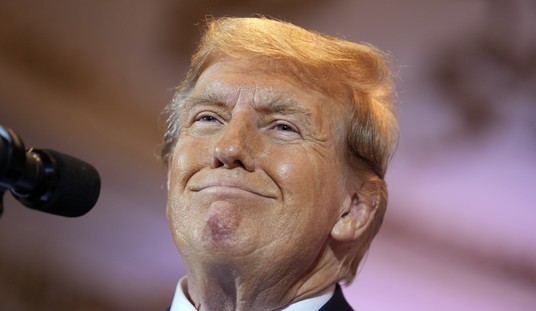



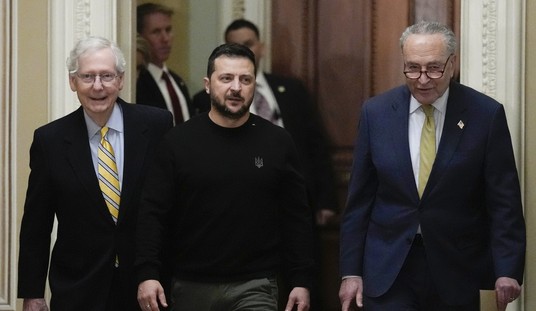

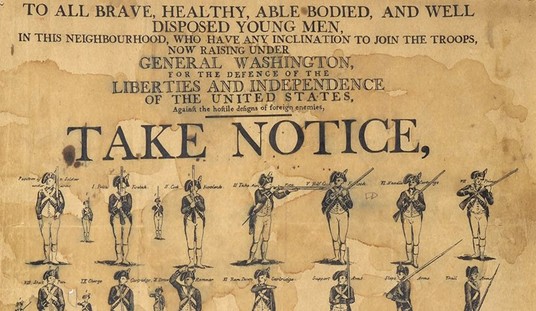

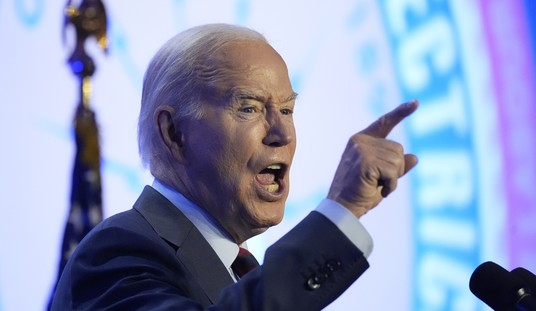

Join the conversation as a VIP Member